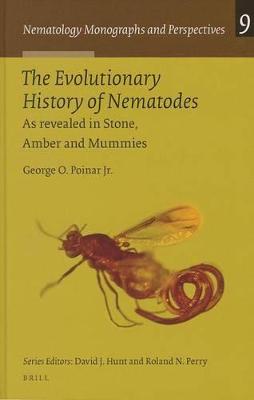Nematology Monographs and Perspectives
1 primary work
Book 9
Nematodes are one of the most abundant groups of invertebrates on the face of the earth. Their numbers are estimated to range from 1000 per cm2 in the sand-covered hydrogen sulphide ‘black zone’ beneath the ocean floors to 1.2 billion in a single hectare of soil. Estimates for their species diversity range from 100 000 to 10 million. The past history of nematodes is a mystery, since very few fossils have been discovered. This book establishes a solid base in palaeonematology with descriptions of 66 new fossil species and accounts of all previous fossil and subfossil nematodes from sedimentary deposits, coprolites, amber and mummies. It shows how nematode fossils can be used to establish lineages at various locations and time periods in the earth’s history and when nematodes entered into symbiotic and parasitic associations with plants and animals.
